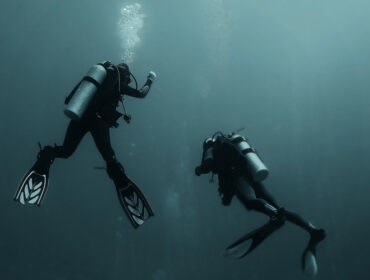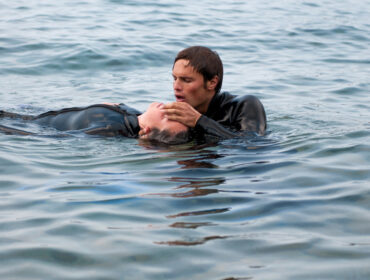One of the most critical situations that can happen to a diver underwater is panic. Panicking causes one to forget what they already know and lose the ability to think rationally, which is one of the worst things that can happen to you when you’re tens or even hundreds of feet underwater with no means to communicate except actions.
If you don’t rescue diver certified, which we’ve always maintained should be the minimum certification level for even recreational divers, dealing with a panicking diver can be pretty daunting, if not outright scary. (Read: What A Scuba Rescue Diver Course Entails)
In most cases, divers panic when they feel out of air or aren’t getting enough air. Due to your unnatural environment, divers often predispose themselves to panic, especially in such emergency situations. It’s a natural human response to allow that overwhelming sense of anxiety to take over instead of recalling the training you’ve gone through. So before you know it, rather than reaching for your octopus or backup air supply or even signaling to your buddy that you are out of the air and take his or her alternate regulator, your first instinct is to get out of the situation as quickly as possible, which in diving is the absolute wrong thing to do since that instinct is to hold your breath and kick for the surface. To deal with a panicking diver, it’s essential first to identify the signs of panic and then how to deal with him/her.
Signs Of Panic in a Diver
It’s easy to identify signs of panic, like a diver trying to tear the regulator from another diver’s mouth to get air. However, some outward signs aren’t so obvious to spectating divers who aren’t experiencing it. They may include:
- a panicked, wide-eye stare
- rapid, shallow breathing or hyperventilation
- breath holding on the ascent
- sudden inability to communicate or recognize underwater hand signals or signs
- flailing arms and attempting to bolt to the surface
- withdrawal or a trance-like state, involuntary freezing or inability to move
Tips to Assist a Panicking Diver
Panic can happen to anyone at any time. But by using basic rescue techniques like the ones below, you should be able to calm the diver down and safely get him/ her to shore to avert a potential emergency.
- Try communicating with the victim with calming and reassuring signs, looking them straight in the eyes with confidence that you know what you’re doing. The last thing they need is to see fear in your eyes, and you frantically sign something they can’t understand. If you, they don’t seem to be comprehending or seem more confused…
- Establish buoyancy for them if they are quickly ascending or descending. To to this you need to get behind them, keep your hand on their tank valve to keep them from turning around and reach around for their power inflator and do the needful .
- Check the victims gauges to determine whether they are actually out of air, if they are lock arms with the diver and give them your octopus, purging it for them once it’s in their mouth. If they aren’t out of the air like they seem to think, retrieve their octopus and put it in their mouth, purging it of any water.
- Once the air situation is solved, work on getting the diver safely back to the surface by locking arms with them and making them ascend with you at a safe rate. This is easier said than done, especially if the diver is very panicked. Getting them to an anchor line to ascend will help greatly, as it gives them a sense of security.
- At the surface, expect a panicked diver to try to push you or another diver to get further out of the water. If the victim has grasped you around the head or neck, they will try to climb you. To escape, you must turn your face away from the crook of their arm and towards their hand. Then, grasp their elbow with your hand closest to the crook of their arm while grasping their hand or wrist with your other hand. Push up on their elbow and pull out on their hand, and as you sink, twist their arm away from you. Immediately swim clear and prepare to regain control.
- If the victim is still struggling at the surface you need to maintain a defensive position. Swim away on your back keeping your eyes on the victim,if they get too close to you, place your foot gently on their chest and push them away. Do not kick at them aggressively, just rather try to maintain a distance. Swim in the direction of safety, and they may continue to follow you there.
Remember, the best way to deal with a diver in this sort of situation is not to let them panic in the first place. If it’s too late for that, try calming them down and getting them to allow you to do things for them without resting. The absolute best you can do to deal with a panicked diver is to take your rescue diver course, which teaches you to deal with different scenarios and actually practice them by role-playing exercises.




